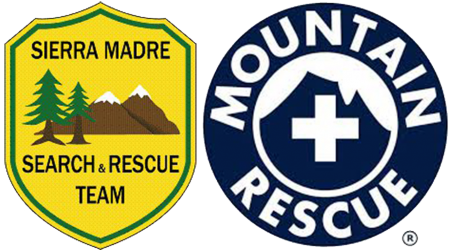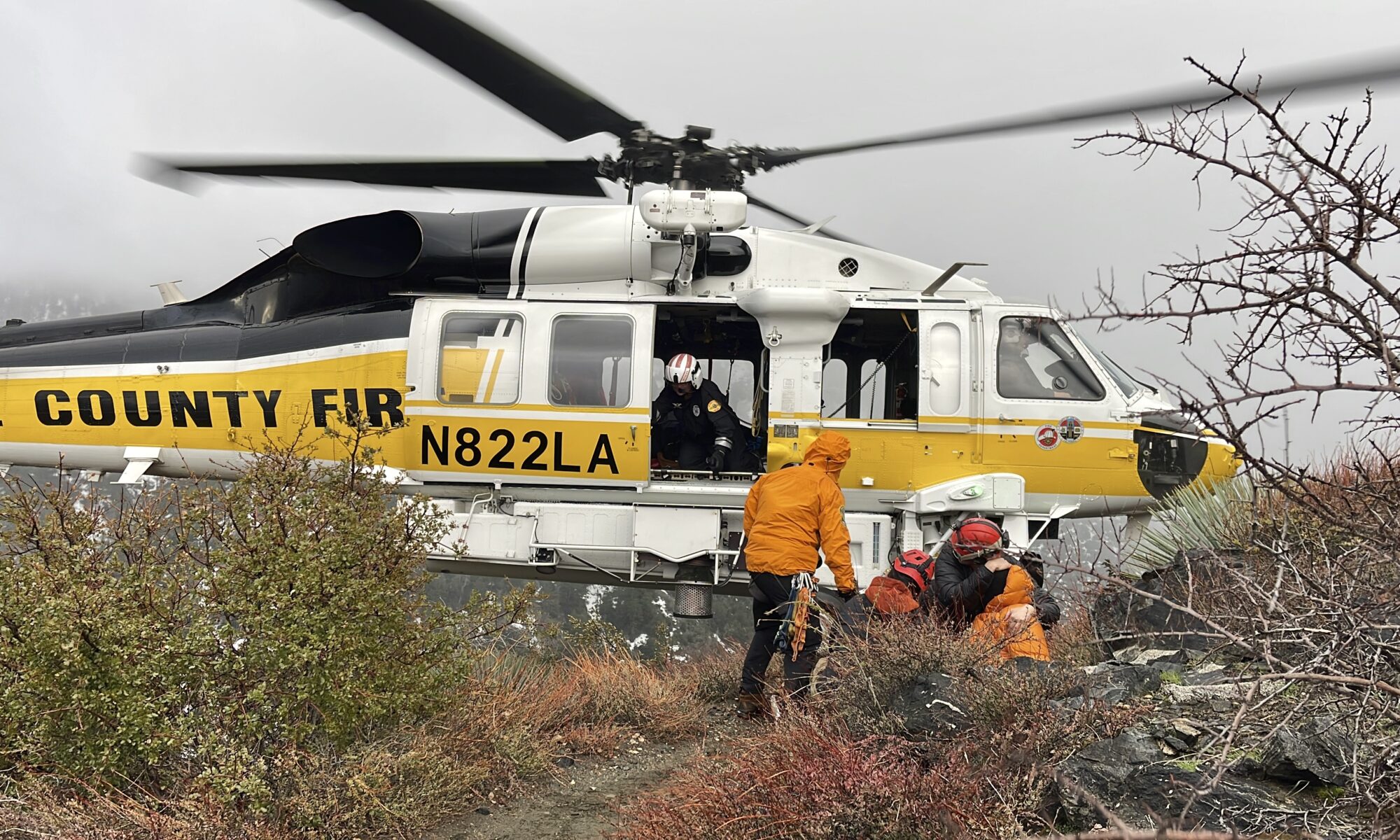Many people who follow the Sierra Madre Search and Rescue Team or other SAR teams on social media are familiar with what we do and our messages on how to be safe in the mountains and avoid ever needing our services. What many are not familiar with is how a SAR operation evolves. The often demanding physical and mental effort in challenging conditions involving many individuals, SAR teams and other agencies that usually lead to a successful outcome are notable and worth sharing.
At 10:28pm Sunday night, the pager went off. Montrose Search and Rescue was requesting help to search for an autistic, deaf, missing person in the Strawberry Meadows area. Along with children, individuals with disabilities are considered as “critical” subjects where time is of the essence – particularly if weather or location present notable risks. Ten members of SMSR stopped getting ready for bed and shifted to getting ready to head out into the night in sub-freezing temperatures to support the search effort.

The missing person, who was separated from his group, had been missing since just before noon. Like many hikers out for the day, our missing person was wearing shorts and a tee-shirt, simple sneakers, and was not carrying any supplies. His friends and other hikers made every effort to locate him, but his disappearance wasn’t reported to SAR until late evening. As weather conditions were deteriorating, SAR teams knew time was of the essence to prevent hypothermia, dehydration, or risk of injury.
Utilizing information gathered from the friends of the missing person combined with detailed knowledge of the area, senior members of the responding SAR teams acting as the “operations leader/incident commander” (in this case, since it was in their area, Montrose SAR personnel filled this role) determined the best course of action. Rescuers from Montrose, Altadena, LASD ESD, and Sierra Madre were deployed from various trailheads to maximize our ability to quickly locate our missing hiker. Covering areas in which a missing person is likely to be found is one of the reasons SAR operations require large numbers of trained personnel. A helicopter from Los Angeles County Fire joined the search for almost an hour but, due to the low clouds and fog, they were not able to locate our missing hiker.
One team, who was alerted by their search dog, stopped, and heard moaning sounds emanating from hundreds of feet below the trail. A rescuer from Montrose SAR went over the side into the canyon and confirmed that we had located our missing subject and while he had only minor injuries, extensive work would be required to rescue him. It was now just before 1 a.m. on Monday morning.
Rescuers had been in the field now for nearly 3 hours and the weather remained poor with fog limiting visibility and a constant drizzle ensuring that everyone was wet. The missing hiker had been found approx. 3.3 miles from the nearest road and now that the “search” part of the search-and-rescue operation was done, crews on other search assignments shifted their focus to rescue. SMSR was requested to bring the equipment necessary for the technical rescue of a subject over 500’ off the trail and in a canyon. Carrying multiple 150’ coils of rope, a rescue litter and wheel, and equipment to set-up rope rescue systems the teams also gathered extra clothing and additional medical equipment that would be necessary to care for the hiker during what would be several more hours on the mountain. The SMSR field crews, composed of 3 women and 4 men (many are surprised by the diversity in SAR) traveled through the mist, over snow and ice, and downed trees to aid in the rescue.

Members of these crews rappelled down to the missing hiker and joined the rescuer already with him to assess his injuries and provide him with warm clothing, gloves, and a hat. By putting rope hand lines in place, they were able to help him climb 300’ before the terrain became too steep and choked with downed trees to continue. With the possibility of a long technical rescue and with on scene crews having been in the field for an extended time, additional resources from other LASD SAR teams were requested. With the arrival of additional rescuers and more resources from the San Dimas Mountain Rescue Team enroute to augment existing personnel, systems were built to lower a rescuer on a rope rescue “system” in order to initiate what we call a “stranded hiker” rescue.
Due to the unique circumstances associated with a deaf and autistic individual, two rescuers, one above to help with face-to-face communication, and one below to help guide him worked in conjunction with the rope rescue equipment being managed by the personnel on the trail to get our hiker out of the canyon. Although he was worn out and suffering from a deep cut over one eye and several lacerations on both legs, the hiker was quite brave and determined to help us help him get to safety. It was now just after 7 a.m. Crews had now been in the field for over 10 hours.

Based on trail conditions observed during the search, crews knew the trails for a possible ground evacuation contained too many hazards for a “wheel out” utilizing a rescue litter and wheel. Various evacuation options were considered and rescue leaders felt that, if a small break in the weather were to be present, a helicopter-based rescue would be the best option. A request was made to the Los Angeles County Fire Department for assistance and LACoFD’s ‘Copter 22 flew in to assess the possibility of a hoist. The weather turned out to be quite marginal, but we got lucky with a moment of clearing. With a hoist rescue not being possible, crews quickly got our hiker ready for transport and assisted him to an area where the helicopter could land on one wheel. Members helped our hiker climb into the Helicopter, and he was off to a trauma center. This is the video we shared earlier that shows about 90 seconds of what had transpired up to that point. It was now just about 8 a.m. and rescuers had been in the field for 11 hours.
While our subject was safely transported and out of the mountains, rescuers still needed to safely get off the mountain. Rescuers gathered all their equipment and began the hike out. Thankfully, the fresh rescuers from San Dimas met us along the trail to help the fatigued crew carry the gear out. Crews reached the command post at Red Box at approximately 9:30 a.m. and just over 12 hours since beginning the operation. We are glad to have been trained and equipped to support this SAR effort and hope this write-up gives you a sense for how SAR is a “team” activity that involves a lot of effort on the part of many individuals and agencies.
SMSR wants to remind everyone that even though the weather in local towns is warm and sunny, extreme conditions continue to exist above 3500’. Please be prepared for these conditions – including being equipped to spend an unexpected night out, never hesitate to turn back when hazards arise, and do not delay on calling for assistance.


